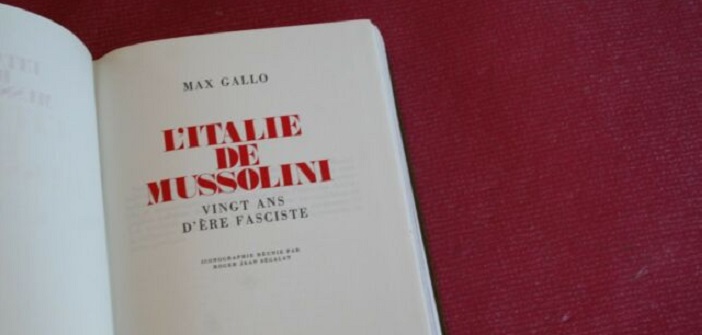When Max Gallo wrote this history of fascism in Italy, it was 1964, the war and the regime were still very present in people’s memories. It was difficult then to write about this subject with complete objectivity.
Max Gallo describes Italy after the First World War; a ruined, disenchanted country, feeling its victory was stolen. Mussolini, for his part, evolved from a radical socialism, anti-militarist to the intervention of his country, then neutral in the conflict. Would Italy remain neutral, enter the war, and on whose side?
Max Gallo shows us the ease with which Mussolini abandoned his ideas to adopt new ones contrary to what he defended. From a socialist, he became a nationalist in the most violent spirit. Then, when he took power, violence replaced law, and freedom disappeared.
For twenty years, Italy was under the yoke of a dictatorship. Mussolini, after 1933 and especially 1935, aligned his country with the race delusion proclaimed by Hitler. He would imitate Germany to the point of adopting the goose step, which became the Roman step. The regime sank into ridicule. Which was not at all amusing, as it plunged his country into a war where the peninsula suffered the consequences of the madness of a man who had lost all sense of reality.
King Victor Emmanuel III, flattered by the grand-sounding titles of King of Albania and Emperor of Ethiopia, let the situation fester until he lost his crown. Mussolini will remain in history as the man who attacked France, already struck by Germany, by proclaiming the necessity of having a few thousand dead to be able to sit at the peace negotiating table.
A statement dishonoring his country and showing profound disdain for the Italian people and human life. A book to read when we see the resurgence of the hydra of fanaticism and nationalism in various European countries.
Thierry Jan


